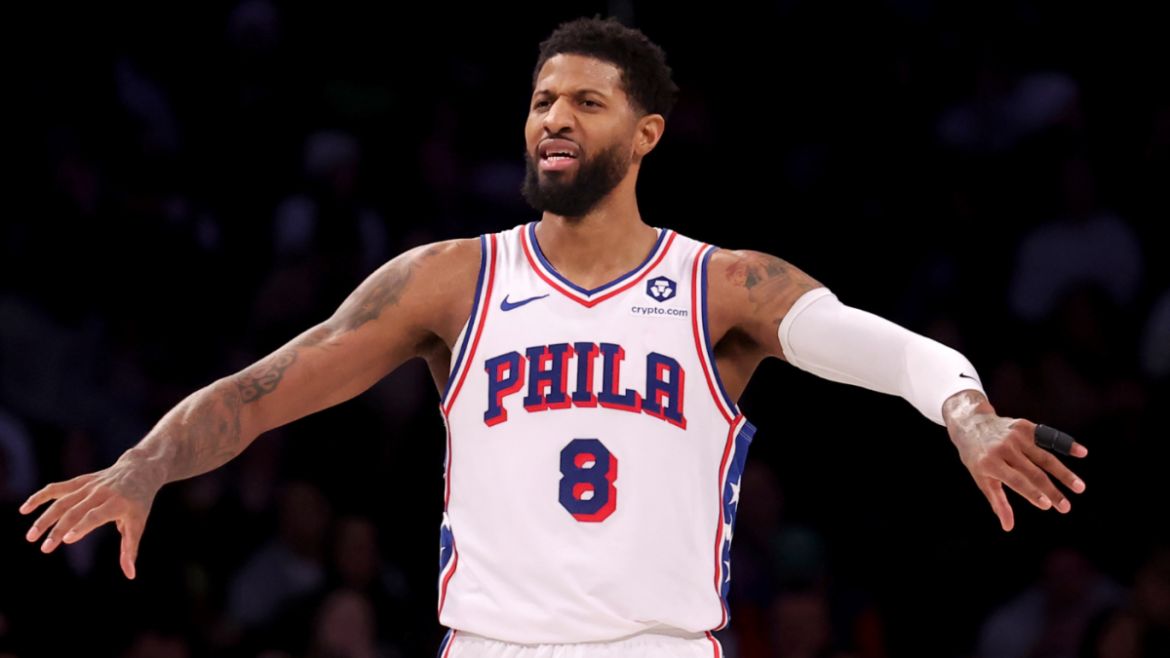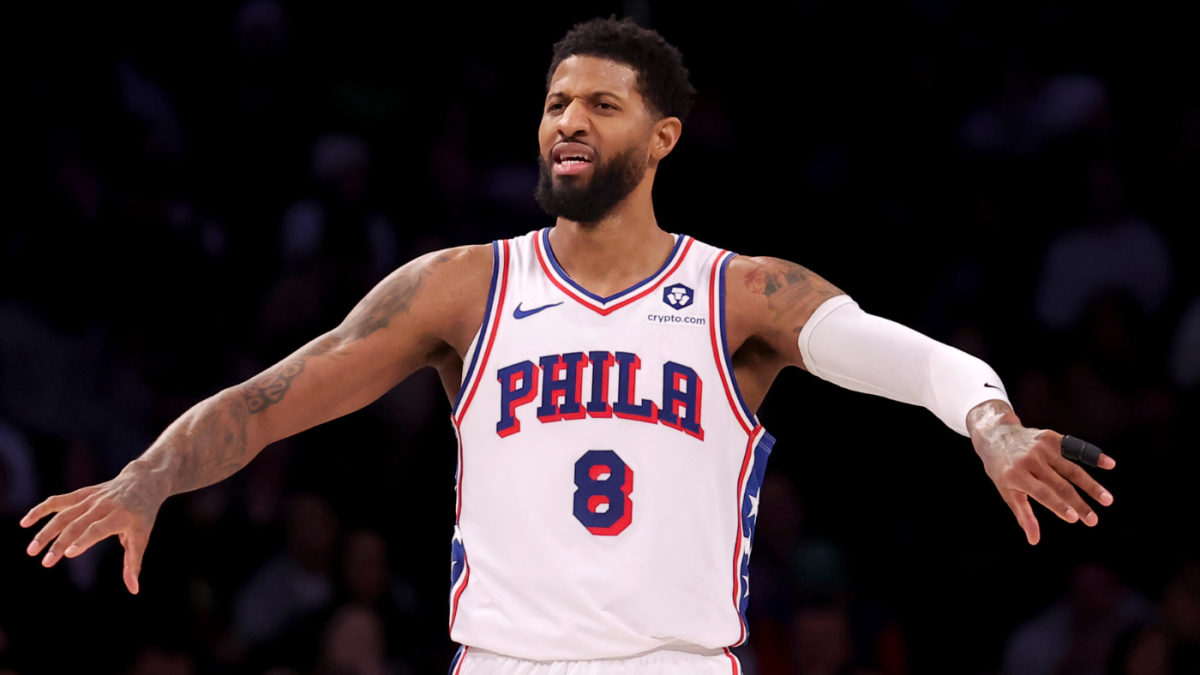Paul George’s First Season with the Philadelphia 76ers: An In-Depth Analysis of Injury Challenges and Impact
Paul George’s acquisition by the Philadelphia 76ers in the 2024 offseason was heralded as a major step toward building a title-contending roster alongside Joel Embiid and Tyrese Maxey. However, his debut season with the Sixers was marred by recurrent injuries that significantly affected his playing time, performance, and ultimately the team’s chances during the 2024-25 NBA campaign. This report delves into the nature of George’s injuries, the timeline and impact on his season, and broader implications for both the player and the franchise.
A Promising Start Clouded by Early Setbacks
After signing a four-year, $212 million max contract in the 2024 offseason—an investment highlighting the franchise’s confidence in him—Paul George faced immediate challenges. During a preseason game, he suffered a left knee hyperextension, which delayed his regular-season debut until the Sixers’ sixth game. This injury caused him to miss the first five games, setting a troubling tone for the season ahead.
George’s early promise remained evident when he scored 15 points in his delayed debut, demonstrating his ability to perform despite injury setbacks. However, these initial injury woes were just the beginning, as his left knee continued to be a source of concern.
The Cascade of Injuries: Knee, Adductor, Pinkie, and Groin
Throughout the season, Paul George battled several injuries that compelled him to miss numerous games:
– Left Knee Injuries: Beyond the preseason hyperextension, George suffered a bone bruise in his left knee during early season play. This injury led to multiple game absences, including a notable stretch where he missed three games following a recurrence in November. The knee issues ultimately required medical interventions such as injections.
– Left Adductor Muscle Injury: In March, after persistent soreness and monitoring, George underwent injections in his left adductor muscle to address groin discomfort. This injury was serious enough for the Sixers to shut him down for the rest of the regular season.
– Left Pinkie Finger: In January, George suffered an injury to his left pinkie finger, unrelated to his lower-body injuries but nonetheless disruptive enough to contribute to his inconsistent availability.
– Groin Soreness: Aside from the adductor muscle issue, groin soreness also forced him to sit out consecutive games, further exacerbating his time off the court.
This constellation of injuries led to George playing only 41 games in the 2024-25 regular season, a significant reduction from a typical 82-game calendar, severely limiting his ability to maintain rhythm and contribute fully.
Impact on Performance and Team Dynamics
Throughout his limited play, George averaged respectable numbers, including 16.2 points, 5.3 rebounds, and 4.3 assists per game. While these stats suggest he was productive when healthy, the frequent interruptions undermined consistency and chemistry with teammates.
Two critical factors amplifying the season’s disappointment were:
– Missed Games: The injuries forced George to miss stretches of the season that coincided with pivotal team games, impairing the Sixers’ ability to deploy their intended core lineup.
– Team Injury Burden: Notably, Joel Embiid—the Sixers’ other star—also dealt with knee issues and related soreness, sidelining him for long periods. The dual absence of George and Embiid on multiple occasions left the team depleted in star power and defensive presence.
Coach Nick Nurse highlighted the challenges, particularly after George’s knee hyperextension in November, which coincided with defeats such as the 117-111 loss to the Memphis Grizzlies. The season opener itself saw both George and Embiid sidelined against the Milwaukee Bucks, underscoring how injuries shaped the Sixers’ fortunes from the outset.
Medical Decisions and Season Shutdown
Despite the multiple injuries, George attempted to play through pain and missed minimal games at times (never more than five consecutively before March). However, the cumulative effect of his left adductor and knee injuries culminated in a definitive medical decision in mid-March 2025: after consultation with specialists and receiving requisite injections, the Sixers ruled George out for the remainder of the regular season.
This decision ended a “deeply disappointing” first season for the veteran forward, after which he transitioned into recovery mode. Importantly, reports reassured that George avoided season-ending ligament tears or surgical interventions necessitating prolonged absence, but the cumulative trauma required rest and rehabilitation.
Reflecting on the Season and Future Outlook
Paul George’s 2024-25 campaign in Philadelphia was defined more by injury management than by on-court achievements. The high expectations accompanying his blockbuster signing were unmet due to his inability to stay consistently healthy, disrupting both individual and team momentum.
From George’s perspective, the season was “frustrating,” as he openly shared on his podcast the struggles with multiple injuries and the impact they had on his performance and adjustment to the Sixers. Balancing recovery with playing ambitions proved a difficult tightrope.
For the Sixers, George’s absence compounded the team’s challenges in mounting a strong playoff push and ultimately led to a lost season feeling. The frontline’s physical limitations, with star players sidelined, highlighted the need to address durability and roster depth moving forward.
Conclusion: Lessons and Expectations Ahead
Paul George’s injury-plagued debut season with the Philadelphia 76ers stands as a reminder of how talent and potential can be stalled by physical setbacks. Despite moments of promise and flashes of his elite skill set, the recurring knee, adductor, and ancillary injuries hollowed out his impact and curtailed the team’s title aspirations.
Moving forward, the key will be George’s full recovery, maintaining health through rigorous conditioning, and strategic load management. Simultaneously, the Sixers must consider how to support their stars’ durability through medical resources and roster construction.
Although the first season fell drastically short of expectations, there remains hope that George’s elite basketball acumen and resilience will enable him to rebound strongly and contribute meaningfully in future campaigns, helping Philadelphia pursue the championship success envisioned when he was signed.





